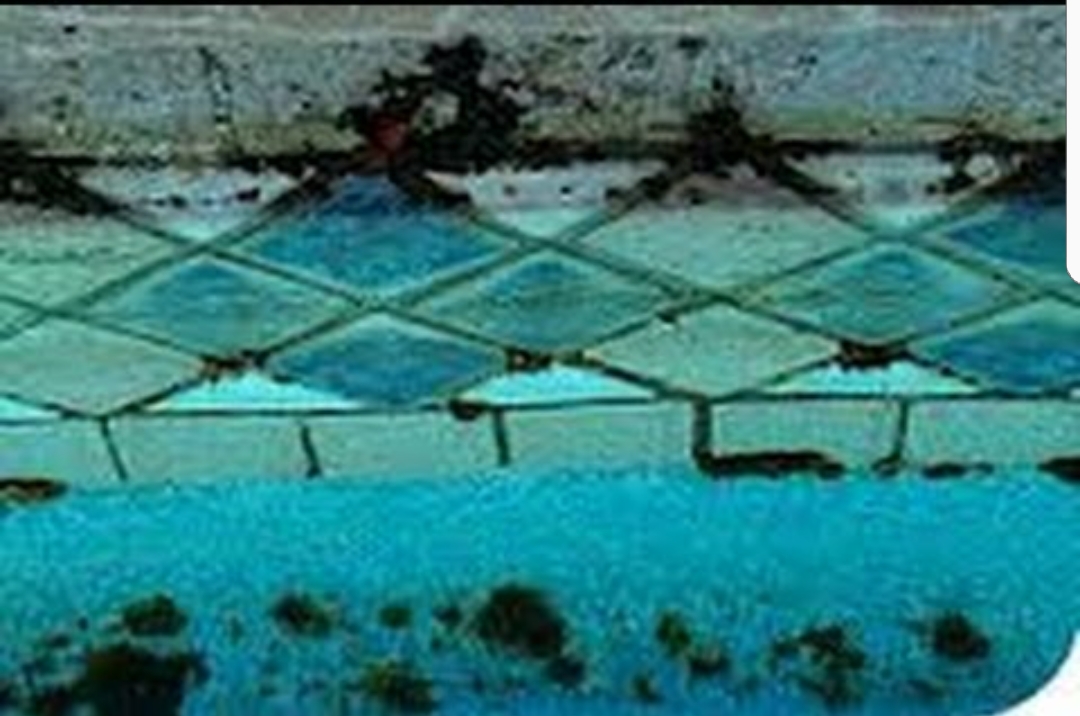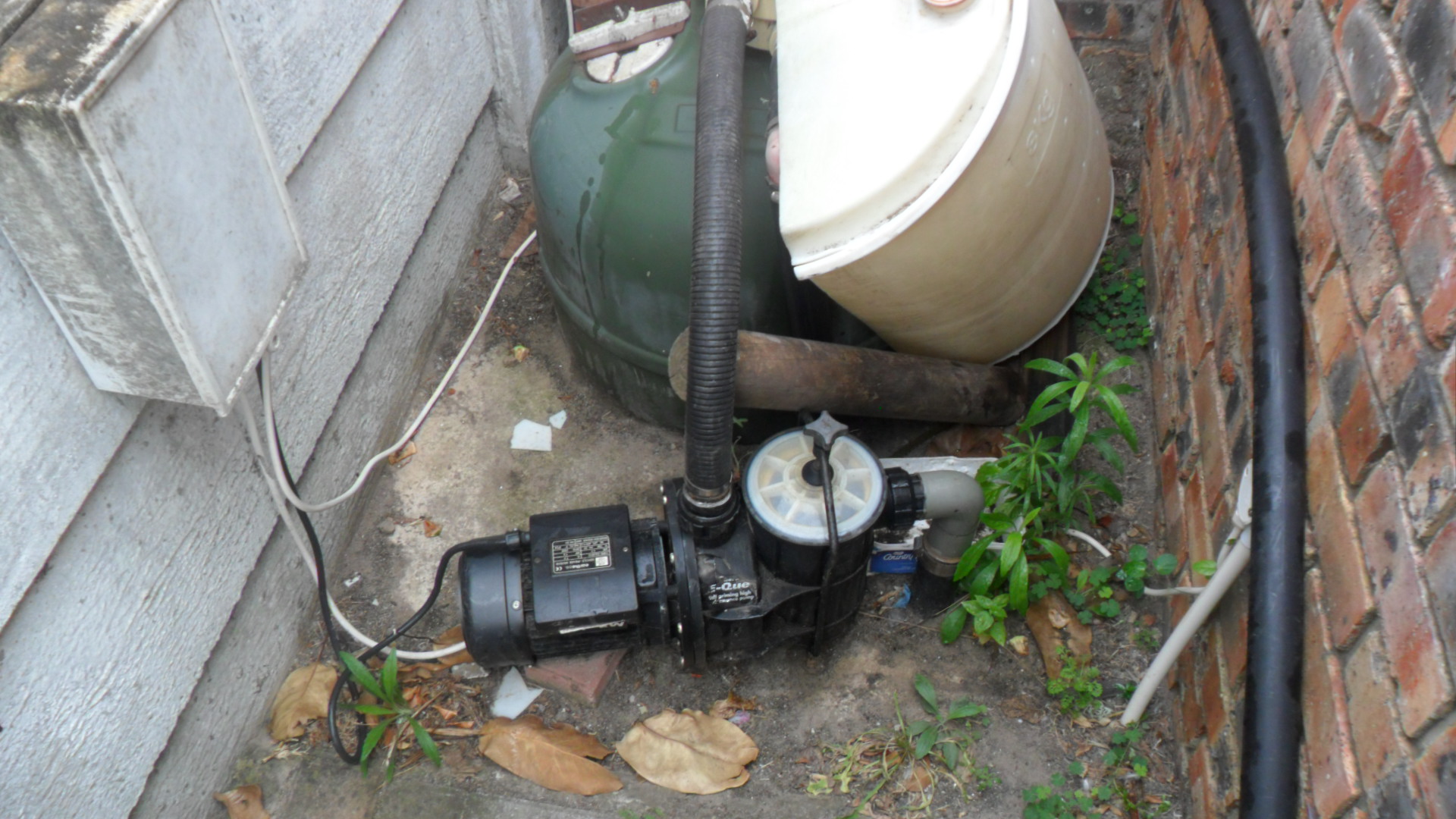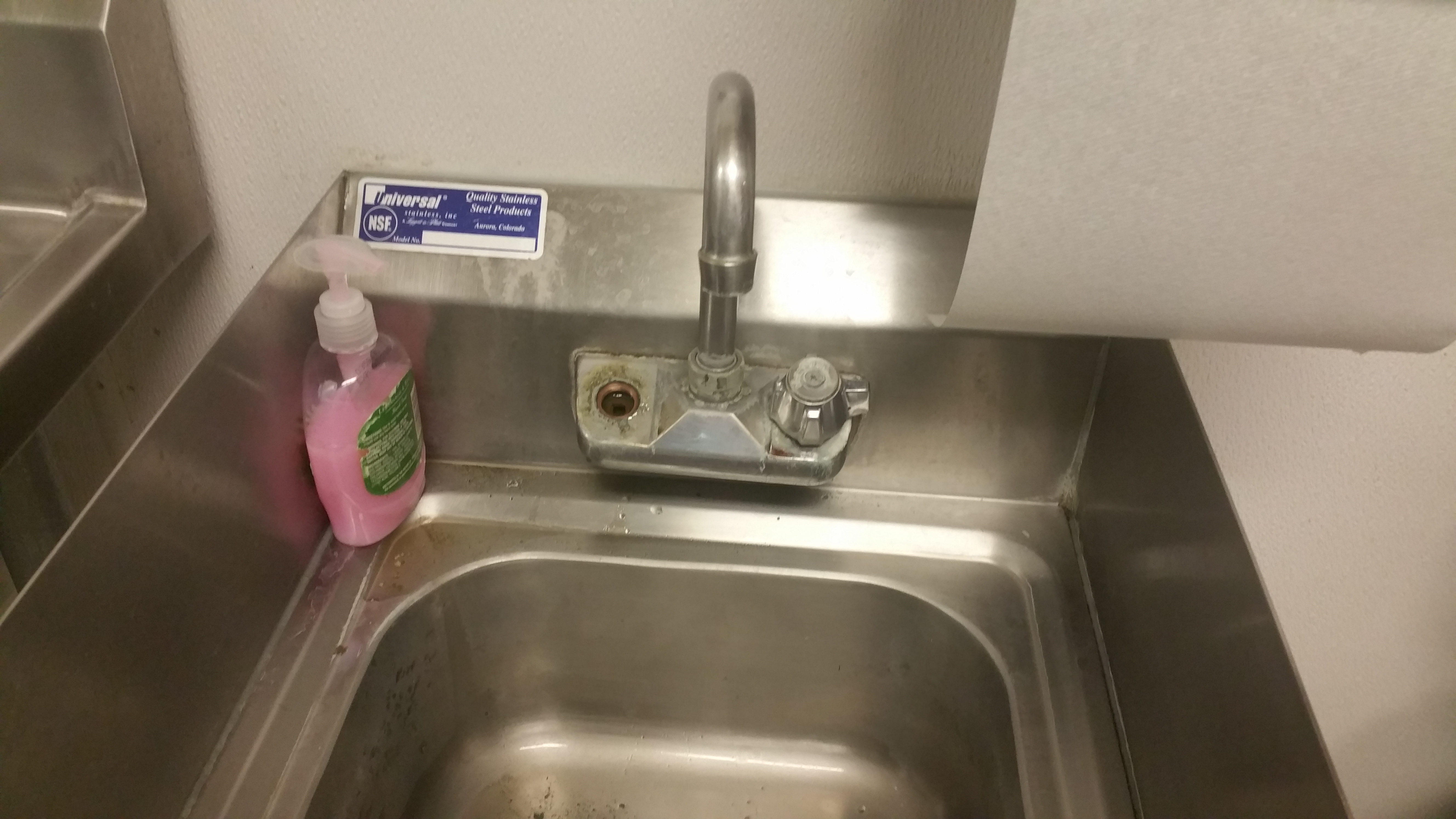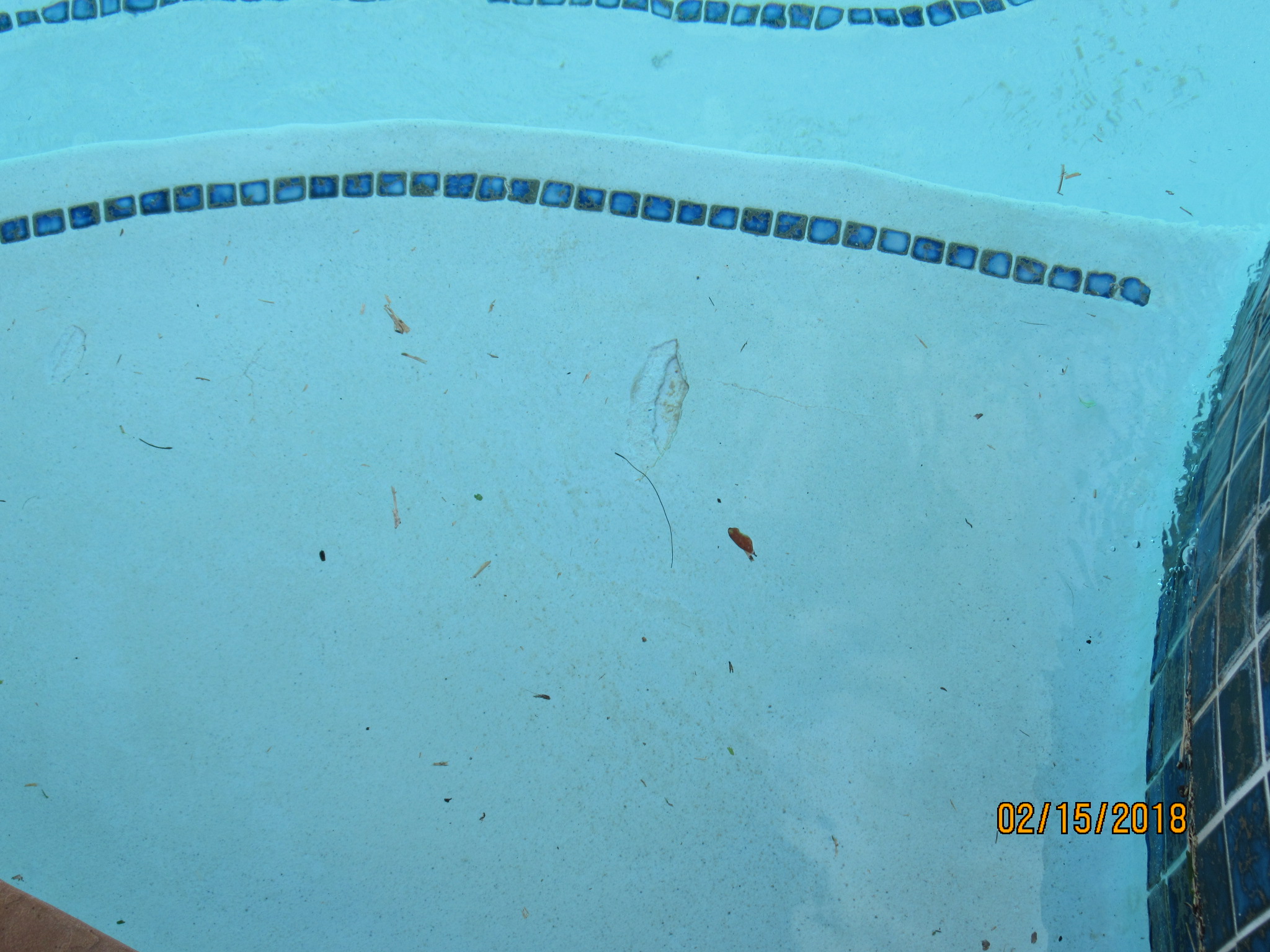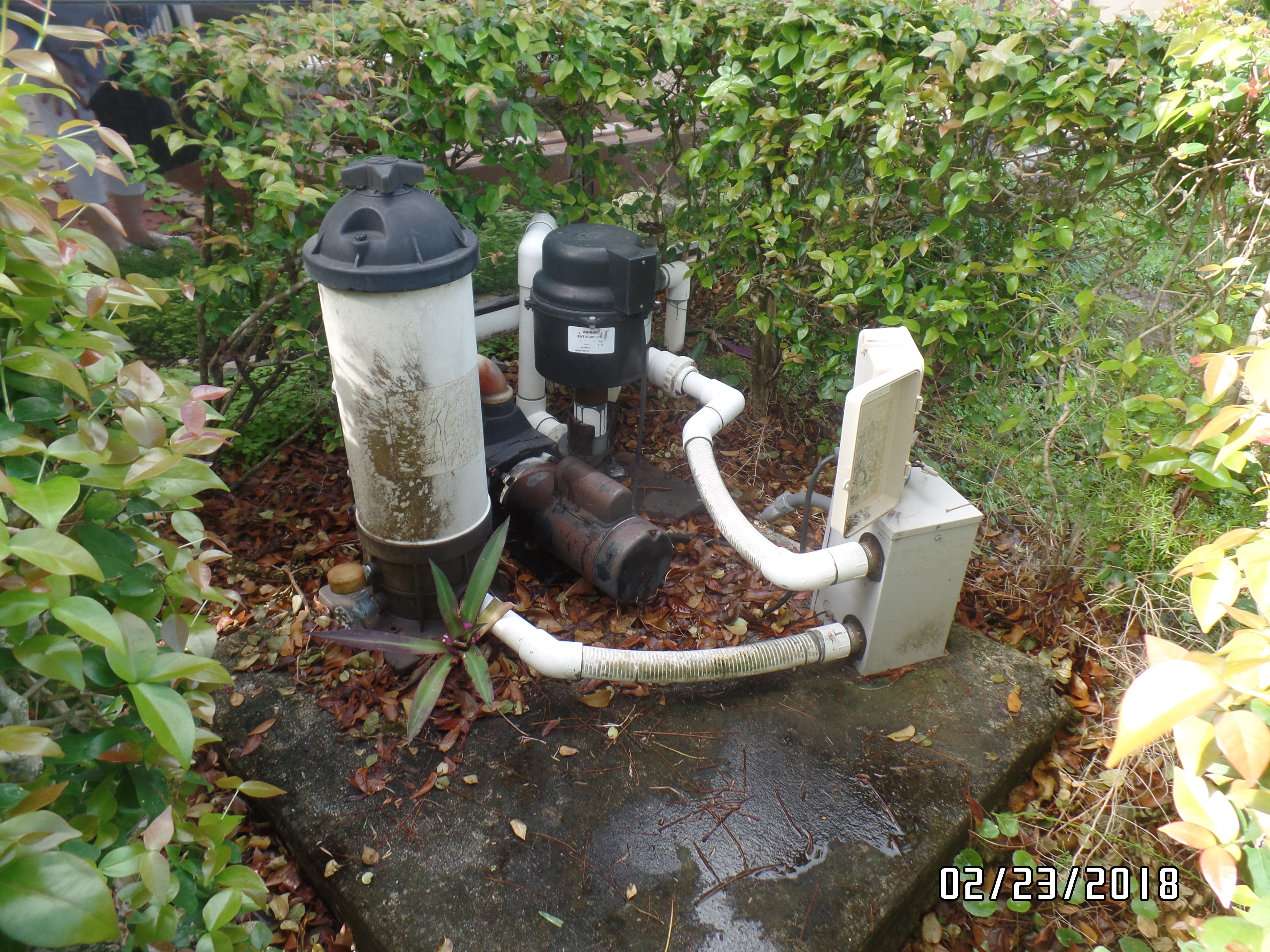It is important that concrete chimney caps be free of cracks to prevent water intrusion and loosening of the concrete. Rain caps must be installed to prevent water, debris, birds, etc. from entering the chimney flue to prevent entry to the fireplace below.
The electric panel has 4 double tapped circuit breakers. This condition has created a safety hazard. Double tapping can potentially overload the circuit breaker. This condition is commonly seen where there are too many circuits and not enough circuit breaker slots available.
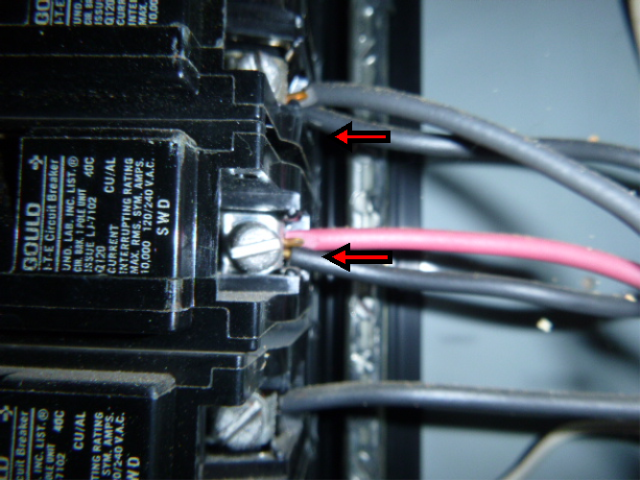
This is a picture of a pool wall covered with a heavy covering of black algae. Black algae on the pool walls are more difficult to get rid of and require super-chlorinating the pool water more frequently and using a brush to remove the spots.
I chose the article “Pool Water Pathogens”.
Pool water pathogens can cause a variety of symptoms with their associated diseases such as diarrhea, skin, ear and upper respiratory infections caused by bacteria, such as E. coli, shigella, campylobacter and salmonella; protozoa, such as cryptosporidium, and giardia, hepatitis A and noroviruses.
The pump for a local residential house. Many factors to consider. The whole filter system and mainly the pump did not have adequit cover, leaving it exposed to rain. On closer inspection some of the electrical distribution board wires were loose. It was also inconvenient to get to the filter.
In studying this section it became apparent on how many points there are on inspecting a residential pool, including A) Maintenance, B) Saftey C) Instalation of motor and filter. It is quiet an exhausting exercise to do a proper inspection keeping in mind that other than actual construction, everything can be inspected and reported upon. A big plus to any purchaser.
Today I chose to write about pool and water safety. Pools and spas are great was to relax. However they can be a nightmare if not treated with care. With over 3000 drownings a year we need to let parents be aware of pool safety.
Today I chose to write about pool and water safety. Pools and spas are great was to relax. However they can be a nightmare if not treated with care. With over 3000 drownings a year we need to let parents be aware of pool safety.
This is my pool setup. I live in the pacific northwest, so being it is barley March, we are still winterized. I have a heat pump for the heating system. The pool wall is Vinyl, dual main drain, skimmer and two return ports. As you can also see form the picture, due to the high rains we get a lot of crawlers in the pool over the winter. As long as I vacuum them out with a shop vac. and not run the main pump, I will avoid the having to flocculent the pool. Last season I tried to use the main pump, and I plugged the filter, turned the pool a very clouding pink and had to take an extra week trying to get the pool opened for the season. Not pictured is a chlorinator tower. It hold 10 chlorine tablets that last about 2 weeks. THe filter system is a quad cartridge. They last about two full seasons with proper care. I could make them last longer but I like to have new ones. a new set of 4 is around $100.00
I read, “Pool Alarms” by Nick Gromicko. I was not previously aware of these types of alarm systems. I have three boys and own a large pool. My boys are all oder and excellent swimmers, but that doesn’t mean I let them play unattended. I always need to know if they are in the pool. On occasion, pool play can get rough and someone gets hurt. These types of alarms are a great idea and will certainly be something I recommend to my clients.
The image taken was a backyard pool. The submerged pool stairs showed signs of surface defects that required evaluation and repairing as needed. Several other similar defects were observed at the time of the inspection. Repairing of defects is recommended to avoid worsening of situation.
When inspecting the exterior of a home with a chimney on a pitched roof. I always try to confirm the clearances within 10 feet of the chimney that sticks out through the roof. The image shows that any chimney on a sloped roof should have atleast 2 ft minimum clearnace above anything within 10ft radius. This ensures all hot gases are clear of any roof structure. The chimney should also be at least 3ft in length from where it penetrates the roof.
Research and Writing Assignment: Safety Guidelines for Home Pools.
Keeping the water chemistry balanced is a very important aspect of owning a swimming pool but safety is even more important to prevent drownings. Inspector should pay special attention to the safety guidelines when performing a pool inspection.
Whenever you find signs of previous repairs it is important to include it in your report and let the client know about it. Always check that spot inside the attic to confirm if it is an active or past leak.
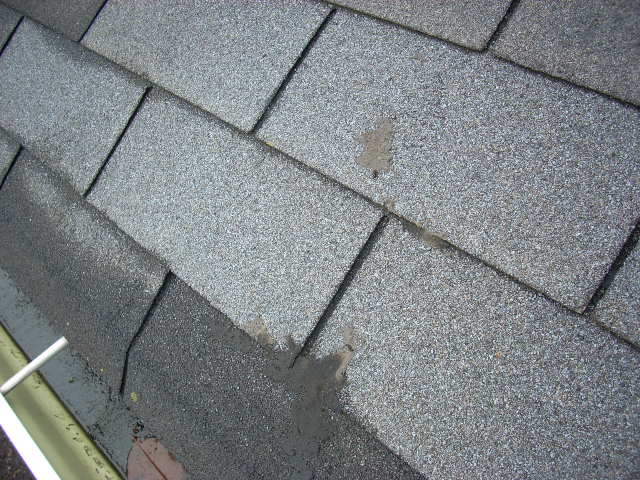
Recently I had an inspection where the buyer was interested mostly in the Spa- it had been unused for 2 years and the accessories were like disconnected- I advised to get the opinion of a certified and bonded Electrician specialist on pool ans Spa
Recently I performed and inspection where the Spas had been inactive for couple of years- the motor was corroded and there were some wires unplugged- I pushed the start button and it didn’t come on- Due to the general situation of the accessories and the spas cover. I immediately reported to get the evaluation of a certified specialist on pools and spas to further evaluate the damage and provide adequate advise
This is very dangerous. I am seeing these being sold everywhere.
Note: these rules are current as of the 2017 edition of the NECa code standard that is updated every three years. While changes to the Code are gradual, it is always a good idea to check on the requirements of the latest edition of the NEC. Your local building inspector can let you know what the most current guidelines are for electrical safety around pools and spas. These are covered in article 680 of the NEC code.
Utility power lines that run over a pool or spa must be at least 22.5 feet above the water level or base of a diving platform. Communications cable must be at least 10 feet above the water level or diving platform. The water level is defined as the highest point water can reach before it spills out of the pool or spa. It is always preferable to install a pool or spa well away from any electrical lines, or vice versa. The water is one thing to worry about; another is the use of pool cleaning nets with very long, metal handles that you lift high into the air.
GFCI Protection
Most devices and equipment serving pools or spas and the surrounding areas must be protected by ground-fault circuit interrupter (GFCI) devices. This includes but is not limited to:
Outlet receptacles within 20 feet of a pool or spa
Underwater pool lights greater than 15 volts
Motors and controls for pool covers
Outlet receptacles for pool pump motors at all distances from pool
Light fixtures less than 10 feet from a pool or spa edge, unless the fixture is more than 5 feet above the water level
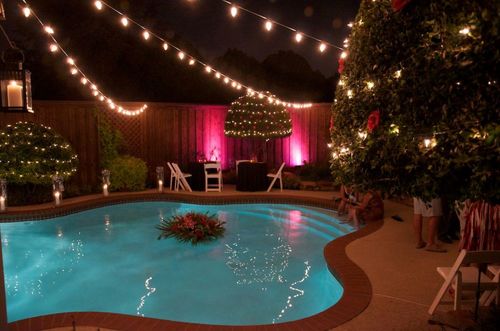
Special Regulations for Self-Contained Spas and Hot Tubs
Outlet receptacles can be no closer than six feet from a hot tub or spa and must be GFCI protected if they are less than 10 feet away
Lights or ceiling fans must be at least 12 feet above the spa or hot tub if there is no GFCI protection, or at least 7.5 feet if there is GFCI protection
Any wall switches must be at least 5 feet from water
Any outlet or direct-wired circuit that powers the motor or heater in a self-contained spa or hot tub must be GFCI protected, no matter how far away from the spa or tub
All gates leading into the pool area must be self closing, self latching, and must swing outward away from the pool area for safety purposes. The fences which enclose the pool area must be at least 48 inches high with no openings larger than 4 inches.
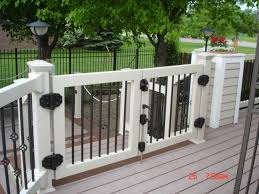
The typical pool and spa plumbing flow starts when the pool pump is turned on. Water is pulled into the drain which is usually at the deepest section of the pool and the skimmer. then through a 3 way port valve, then a heater if so equipped and then back into the pool through the supply ports. It is important to make sure all drain and skimmers are clean to prevent any blockage and poor water flow.
